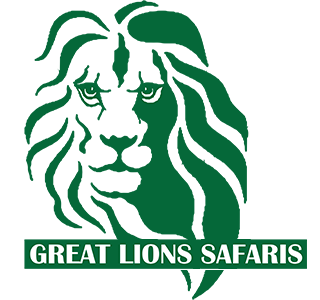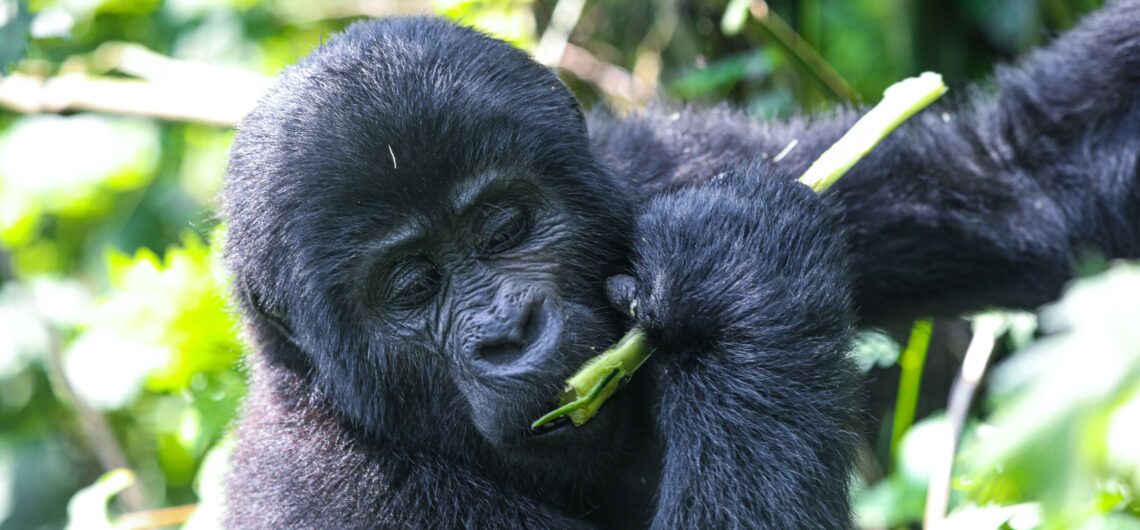One of the most extraordinary and life-altering wildlife adventures one can have is gorilla trekking in Africa, where they can get up close and personal with the mountain gorilla, one of the most gorgeous and endangered animals on the planet.
This unforgettable safari is among the most coveted vacations in the world, and it takes place in the gloomy tropical woods of East and Central Africa. The Democratic Republic of the Congo, Uganda, and Rwanda are the main destinations for gorilla trekking in Africa. Each of these countries offers a distinct trekking and cultural experience.
African Destinations for Gorilla Trekking
The critically endangered mountain gorillas call isolated, mountainous regions in Africa home, and these same regions are also home to the best gorilla trekking locations in the world. Gorilla trekking safaris are mostly offered by the following three countries:
Bwindi Impenetrable National Park in Uganda is the best place to do gorilla trekking, and the country as a whole is a popular choice. Nearly half of the world’s mountain gorillas call Bwindi home, and the park also has many hiking options. There is yet another chance to follow these remarkable apes in Mgahinga Gorilla National Park.
Volcanoes National Park in Rwanda, also called the “Land of a Thousand Hills,” is famous for its well planned and superb gorilla trekking adventures. There is a sizable mountain gorilla population in the park, which is situated in the Virunga Mountain Range.
The Democratic Republic of the Congo (DRC): In the less-visited and more difficult Virunga National Park, daring tourists have the opportunity to follow mountain gorillas. Another unique and unforgettable primate adventure in the DRC is hiking eastern lowland gorillas in Kahuzi-Biega National Park.
Highlights of a Gorilla Trekking Adventure
Guides on gorilla trekking tours usually meet at the park headquarters first thing in the morning to go over the day’s schedule, any important safety information, and any questions or concerns guests may have. The next step is to pair visitors with a certain gorilla family; each group typically consists of eight people.
Depending on the terrain and how far you have to go to reach the gorillas, the hike might take anywhere from one to six hours. On your trek, you may encounter thickets of bamboo, steep, muddy pathways, and deep woodlands.
Meeting a family of gorillas in their own environment makes the difficult journey worthwhile. Witnessing the intricate dynamics between these majestic beings and their environment is an utterly astounding and humble experience.
You will have around an hour to study the gorillas, capture photographs, and immerse yourself in their everyday lives once you locate them. You will never forget your up-close and personal meeting with gorillas because of their kind demeanor and willingness to play near you.
How Much Do Gorilla Trekking Permits Cost?
Anyone planning to go on a gorilla hike has to have a trekking permit. Permit prices differ from one nation to another:
In Uganda, each individual must pay 800 USD for a gorilla trekking permit.
As a sign of the country’s emphasis on luxury tourism, Rwanda charges USD 1,500 per person for a gorilla trekking permit.
DRC: Compared to Rwanda and Uganda, the infrastructure in the DRC is less developed, but the gorilla trekking permits are the most inexpensive at USD 400 per person.
Gorilla trekking permits are scarce, so it’s best to plan ahead if you want to go during busy tourism seasons.
When to Go on a Gorilla Trek in Africa?
You may go gorilla trekking at any time of year; however, the ideal time to visit is really up to you. Because of the milder temperatures and less precipitation, the months of June through September and December through February are ideal for trekking. On the other hand, the forest is at its most picturesque during the spring and fall rainy seasons (March–May and October–November), when you could also encounter fewer visitors and enjoy a more intimate setting.
Responsible Tourism and the Preservation of Gorillas
In addition to being an exciting trip in and of itself, trekking with gorillas is an important part of protecting these endangered species. The conservation of gorilla populations and their natural habitats, as well as community development initiatives, get substantial funding from gorilla trekking licenses.
Engaging in gorilla trekking requires a commitment to responsible tourist practices. In order to keep the gorillas as comfortable as possible, visitors must adhere to certain rules, such as keeping their distance, not making any abrupt movements or sounds, and not feeding or drinking the gorillas anything close to them.
Enhancing Your Safari Adventure with a Gorilla Trek
Gorilla trekking is only one part of an African safari that many tourists want to do. Choose from popular choices like:
Big Five Safaris: After a gorilla hike, you may visit a world-renowned wildlife park to see elephants, lions, leopards, buffalo, and rhinos, such as Rwanda’s Akagera National Park or Uganda’s Queen Elizabeth National Park.
Gorilla trekking in Uganda isn’t complete without chimpanzee tracking in Kibale Forest National Park, an adrenaline-pumping addition to any gorilla safari.
Discover the many cultures of East Africa on a cultural tour that stops at local villages like the Batwa pygmies in Uganda or the Genocide Memorial Museum in Kigali to learn about the history of the Rwandan genocide.
Advice for a Fantastic African Gorilla Trekking Adventure
Prepare Ahead of Time: It is crucial to get your gorilla trekking permit well in advance, particularly during the peak season, due to the restricted availability.
The high heights and rough terrain of gorilla trekking may make it a physically challenging adventure. You should be in decent health and able to hike for at least a few hours without discomfort.
Hiking boots that are waterproof, long trousers, and long sleeves are required. Be careful of insects and spiky bushes; the forest floor may be muddy. Because of the unpredictability of the rainforest’s weather, a rain jacket is an additional need.
A local porter can make your hike more simpler and more financially beneficial by carrying your belongings and guiding you through the terrain.
When engaging with the gorillas, it is imperative that you adhere to the park’s regulations. Stay back, don’t use your flash, and don’t move too quickly.
A once-in-a-lifetime opportunity to see one of the most fascinating and endangered species in the world is gorilla trekking in Africa. You may have an amazing wildlife experience while also helping to preserve these amazing species on a hike in Rwanda, Uganda, or the DRC. Trekking with gorillas in tropical forests like Bwindi or Rwanda’s Volcanoes National Park is like nothing else; it puts you in touch with nature like no other.

